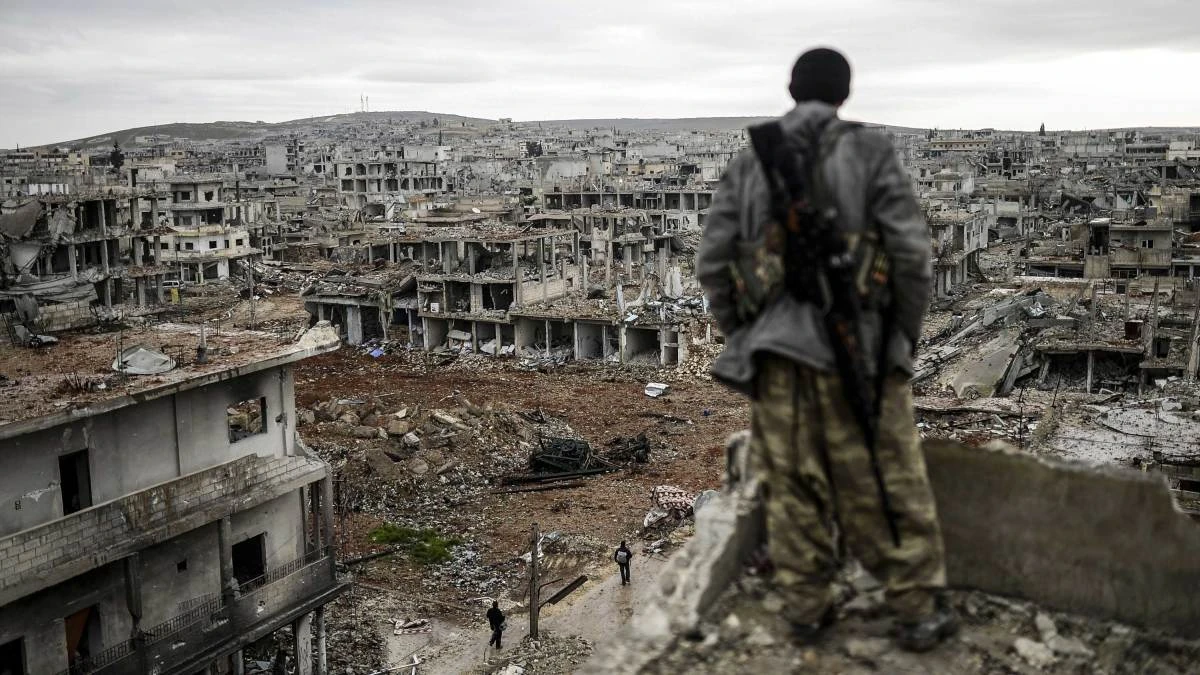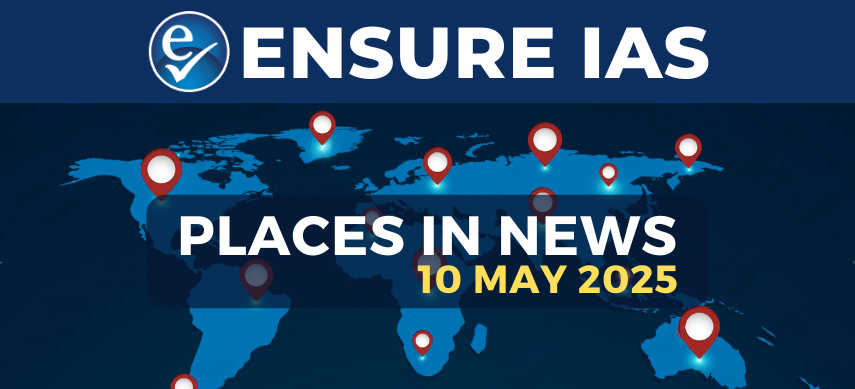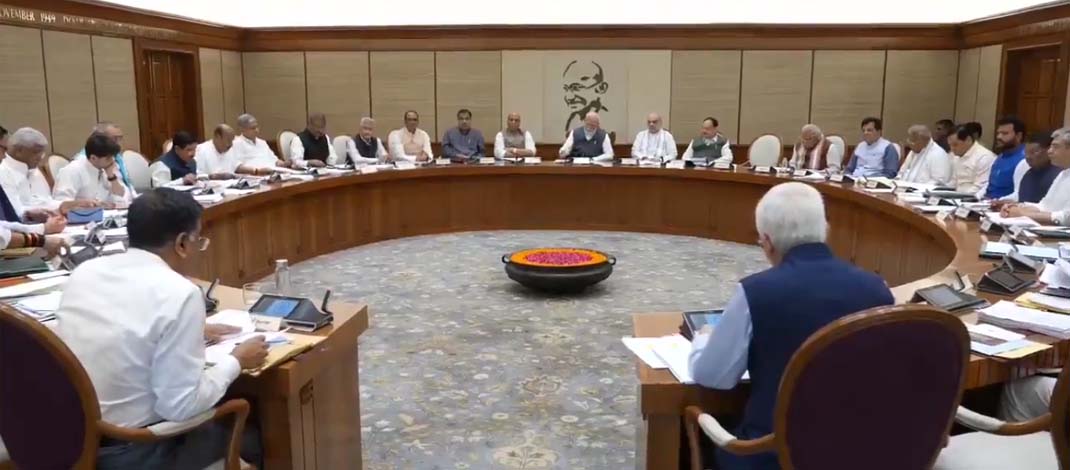- Courses
- GS Full Course 1 Year
- GS Full Course 2 Year
- GS Full Course 3 Year
- GS Full Course Till Selection
- Online Program
- GS Recorded Course
- NCERT (Recorded 500+ Hours)
- Polity Recorded Course
- Geography Recorded Course
- Economy Recorded Course
- AMAC Recorded Course
- Modern India, Post Independence & World History
- Environment Recoded Course
- Governance Recoded Course
- Science & Tech. Recoded Course
- International Relations and Internal Security Recorded Course
- Disaster Management Module Course
- Ethics Recoded Course
- Essay Recoded Course
- Current Affairs Recoded Course
- CSAT
- 5 LAYERED ARJUNA Mentorship
- Public Administration Optional
- ABOUT US
- OUR TOPPERS
- TEST SERIES
- FREE STUDY MATERIAL
- VIDEOS
- CONTACT US
SYRIA’S CIVIL WAR
SYRIA’S CIVIL WAR
25-12-2024

Background (Pre-2011)
- Political Landscape: Syria has been under the rule of the Ba'ath Party since 1963, with Hafez al-Assad taking power in 1970 and later succeeded by his son Bashar al-Assad in 2000. The government was characterized by authoritarianism, a strong security apparatus, and suppression of dissent.
- Socio-Economic Tensions: High unemployment, corruption, drought (2006–2010), and inequality fueled discontent among various segments of the population, particularly in rural areas.
The Arab Spring and Prtests (2011)
- Inspired by the Arab Spring movements in Tunisia and Egypt, protests erupted in March 2011 in the southern city of Daraa after the arrest and torture of teenagers accused of anti-government graffiti.
- Protests spread nationwide, demanding political reforms, the release of political prisoners, and the resignation of Bashar al-Assad.
- The Assad regime responded with brutal crackdowns, leading to further escalation and the formation of armed opposition groups.
Escalation to Civil War (2011–2012)
- By mid-2011, defectors from the Syrian Army formed the Free Syrian Army (FSA), marking the beginning of armed resistance.
- The conflict quickly escalated into a full-blown civil war, with the regime losing control of parts of the country to various opposition factions.
- Sectarian Divisions: Assad's government, dominated by Alawites (a minority Shia sect), faced opposition primarily from Sunni Muslims, exacerbating sectarian tensions.
Fragmentation and Regional Involvement (2013–2014)
- Rise of Extremist Groups: Groups like Jabhat al-Nusra (linked to al-Qaeda) and the self-declared Islamic State (ISIS) gained influence, exploiting the chaos.
- Chemical Weapons Attacks: In 2013, a chemical attack in Ghouta killed hundreds. International pressure led to a deal brokered by Russia for Syria to surrender its chemical weapons stockpile.
- Proxy War: Regional powers like Iran, Turkey, and Saudi Arabia supported different factions, while global powers like Russia and the United States became directly involved.
ISIS and International Intervention (2014–2015)
- ISIS Expansion: ISIS captured large territories in Syria and Iraq, declaring a caliphate in 2014, with Raqqa as its de facto capital in Syria.
- US-led Coalition: In response to ISIS, a US-led coalition began airstrikes in Syria. The coalition also supported Kurdish forces, particularly the Syrian Democratic Forces (SDF).
- Russia's Involvement: In 2015, Russia launched airstrikes to support Assad, targeting both ISIS and opposition forces.
Turning Points and Regime Gains (2016–2018)
- Battle of Aleppo (2016): The government, with Russian and Iranian support, recaptured Aleppo, marking a significant turning point in the war.
- Ceasefire Efforts: Multiple ceasefire attempts, including those brokered by the Astana Process (led by Russia, Iran, and Turkey), failed to produce lasting peace.
- ISIS Decline: By 2018, ISIS had lost most of its territory due to offensives by the SDF, Syrian Army, and international forces.
Ongoing Conflict and Humanitarian Crisis (2019–2023)
- Idlib and Rebel Holdouts: Idlib province remains the last major rebel stronghold, dominated by Hayat Tahrir al-Sham (HTS) and other factions.
- Turkish Operations: Turkey launched several operations targeting Kurdish forces near its border, viewing them as linked to the PKK, a designated terrorist group.
- Humanitarian Impact: Over 500,000 deaths, displacement of millions, and widespread destruction have led to one of the worst humanitarian crises in modern history.
- Economic Collapse: Syria's economy has been devastated, with sanctions, corruption, and the war causing severe poverty.
Captagon: The Key Drug in Syrian Trade
- What is Captagon?
- Captagon is a powerful amphetamine, originally developed in the 1960s as a treatment for conditions like ADHD and narcolepsy. It is now widely abused as a recreational drug in the Middle East.
- Syria has emerged as a global hub for the production and distribution of Captagon.
- Why Captagon?
- It is relatively easy to produce and yields high profits, making it attractive for groups seeking to fund operations during the ongoing conflict.
Role of the Civil War in Escalating the Drug Trade
- Collapse of State Institutions:
- The breakdown of law and order during the Syrian Civil War allowed organized crime networks to flourish.
- Factories producing legitimate pharmaceuticals were repurposed for illegal drug production.
- Funding Armed Groups:
- Multiple factions, including pro-Assad militias and rebel groups, have reportedly used drug production and smuggling to fund their activities.
- Accusations have also been made against individuals close to the Syrian regime, including members of President Assad's family.
Regional and International Impact
- Export to the Gulf States:
- Captagon from Syria is smuggled primarily to the Gulf States, where it has a large user base, particularly in Saudi Arabia.
- The drug trade has generated billions of dollars, significantly affecting regional stability.
- Smuggling Routes:
- Drugs are transported through Lebanon, Jordan, Turkey, and Iraq, exploiting porous borders and weak enforcement mechanisms.
- The Syrian-Lebanese border, controlled in parts by Hezbollah, is a major transit route.
Economic Importance in Syria
- Sanctions and Economic Isolation: Syria’s formal economy has suffered due to international sanctions, loss of industrial output, and widespread destruction.
- Drug production has become a significant source of revenue, helping to sustain parts of the regime and its affiliates.
- Shadow Economy: The drug trade forms part of a broader shadow economy that includes smuggling, arms dealing, and trafficking.
Law Enforcement and Crackdowns
- Limited Efforts in Syria: The Assad government has denied involvement but has shown little effort to curb drug production and smuggling.
- Allegations persist that individual within the regime benefit from the trade.
- Neighbouring Countries’ Response: Countries like Saudi Arabia and Jordan have increased border security and intercepted large shipments of Captagon.
- In 2023, Jordan conducted cross-border operations targeting drug factories in southern Syria.
- Global Response: International agencies and governments have been working to disrupt smuggling networks and impose sanctions on individuals involved.
Social Impact
- Addiction Crisis in the Middle East:
- The widespread availability of Captagon has led to addiction problems, particularly among young people in Gulf countries.
- The drug is often used by combatants for its stimulant effects, exacerbating violence.
- Domestic Consequences in Syria: Local communities in Syria have faced the dual burden of drug addiction and the criminal activities associated with drug production and smuggling.
Future Challenges
- Endemic Corruption: Tackling the drug trade in Syria is difficult due to the alleged involvement of powerful figures and lack of international cooperation.
- Rebuilding Institutions: Without stable governance and law enforcement, efforts to curb the drug trade will remain limited.
- International Pressure: Efforts to impose sanctions and disrupt supply chains may push producers to find new routes and markets.
REGIONAL IMPLICATIONS
- Iran’s Role: Iran has heavily supported Assad, making Syria a base for its proxies and a route for weapons to Hezbollah in Lebanon. The late Qasem Soleimani was key in orchestrating this strategy.
- Assad’s Unpopularity: Assad, supported by Iran and Russia, was unpopular among neighbouring countries, particularly due to his rule over the Sunni-majority country as an Alawite. Syria was suspended from the Arab League in 2011 for violence against protesters, and many Arab states initially backed the anti-Assad movement.
- Jolani’s Challenge: With Assad's regime fading, Abu Mohammed al-Jolani of HTS seeks to end Iran and Russia’s influence in Syria. Though his position appeals to Arab states and Israel, his ideology makes him a challenge for them. UAE and Saudi Arabia oppose groups like the Muslim Brotherhood, and Israel continues its opposition to groups like Hamas.
- Regional Rivalries: Countries like Russia, Turkey, and Iran have overlapping interests in Syria and continue to manage regional power dynamics. For example, Turkey supports anti-Assad groups, while Israel has coordinated with Russia on military operations targeting Iran-backed forces in Syria.
GLOBAL IMPLICATIONS
Taliban Influence:
- HTS (Hayat Tahrir al-Sham) celebrated the Taliban's victory in Afghanistan in 2021, using prayers and broadcasts in Idlib.
- HTS ideologue Abd al-Rahim ‘Atun praised the Taliban as a model for militant governance.
- The Taliban's success is seen as a blueprint for other groups, including the removal of regimes like Assad’s.
Russia and Iran’s Support for Assad:
- Russia and Iran played crucial roles in supporting Assad, with Russia intervening in 2015 against ISIS.
- Russia’s support has weakened due to the war in Ukraine, but it seeks to maintain a military presence in Syria's Tartus and Latakia regions.
You Can Read Also: Why Has the MHA Reimposed Restrictions in Three North Eastern States?
Global Implications:
- If HTS controls Syria, it would add to the list of militant successes in Afghanistan, Somalia, and Yemen.
- This could inspire Islamist groups in West Africa to target fragile states.
- The situation reflects global security failures and a shift in the US’s role, with Donald Trump advocating against US intervention.
INTERVIEW QUESTION’S
- Could Syria’s war have been avoided if there had been better regional cooperation among Arab countries before the war? Why or why not?
- What is the likelihood of Syria’s reconstruction under international supervision, considering the complexity of foreign interests and local governance challenges?
- Discuss the role of foreign powers in the Syrian Civil War. How have countries like the US, Russia, Iran, and Turkey influenced the conflict?
- What is the significance of the rise of extremist groups like ISIS and HTS in Syria? How have these groups shaped the course of the civil war?
- What is the impact of the Syrian Civil War on the wider Middle East region, particularly in terms of refugee crises and regional instability?
- Explain the humanitarian impact of the Syrian Civil War. What are the main challenges in delivering aid to the affected populations?
- How has the Kurdish issue influenced the dynamics of the Syrian Civil War?
- How has the civil war in Syria influenced the dynamics of international law, especially regarding the use of chemical weapons and the concept of 'Responsibility to Protect' (R2P)?
|
Also Read |
|



